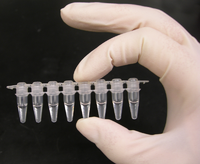
Photo from wikipedia
The engineering of microbial cells to produce and secrete therapeutics directly in the human body, known as advanced microbial therapeutics, is an exciting alternative to current drug delivery routes. These… Click to show full abstract
The engineering of microbial cells to produce and secrete therapeutics directly in the human body, known as advanced microbial therapeutics, is an exciting alternative to current drug delivery routes. These living therapeutics can be engineered to sense disease biomarkers and, in response, deliver a therapeutic activity. This strategy allows for precise and self-regulating delivery of a therapeutic that adapts to the disease state of the individual patient. Numerous sensing systems have been characterized for use in prokaryotes, but a very limited number of advanced microbial therapeutics have incorporated such sensors. We characterized eight different sensors that respond to physiologically relevant conditions and molecules found in the human body in the probiotic strain Escherichia coli Nissle 1917. The resulting sensors were characterized under aerobic and anaerobic conditions and were demonstrated to be functional under gut-like conditions using the nematode Caenorhabditis elegans as an in vivo model. We show for the first time how a biosensor is able to detect in vivo the bile acid-like molecule Δ4-dafachronic acid, a small molecule in C. elegans that regulates lifespan. Furthermore, we exemplify how bacterial sensors can be used to dynamically report on changes in the intestinal environment of C. elegans, by demonstrating the use of a biosensor able to detect changes in lactate concentrations in the gut lumen of individual C. elegans. The biosensors presented in this study allow for dynamic control of expression in vivo and represent a valuable tool in further developing advanced microbiome therapeutics.
Journal Title: ACS Synthetic Biology
Year Published: 2022
Link to full text (if available)
Share on Social Media: Sign Up to like & get
recommendations!